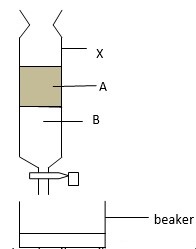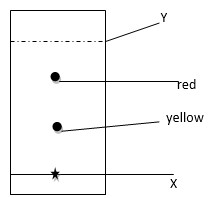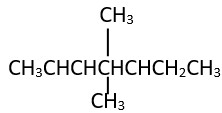Question 1
The diagram below represents a method of separation used to separate two liquids A and B. use it to answer the questions that follow.

- Name two properties that makes it possible for the two liquids to be separated.
- Give one alternative method that may be used to separate the two liquids.
Answer
- 1. Different densities
2. Are immiscible - Decantation/use of a dropper
Question 2
Name the following organic compounds
Answer
- 4,5-dimethylhept-2-ene
- butylethanoate
Question 3
Name the following processes.
- When anhydrous calcium chloride is left in an open beaker overnight a solution was formed.
- When sodium carbonate decahydrate crystals are left in an open beaker for some days it turned into a powder.
Answer
- deliquescence
- efflorescence
Question 4
In 35 seconds, it was found that 140cm3 of nitrogen (N2) had diffused through a strip of porous porcelain. How long will it take 400cm3 of carbon (IV) oxide to diffuse through the same strip of porous porcelain.
Answer

Question 5
The chromatogram below shows the constituents of a flower extract. Study it and answer the questions that follow

- Explain the different positions of red and yellow pigments.
- What does lines X and Y represent
X
Y
Answer
- - The red dye is highly soluble and less sticky
- The yellow dye is less soluble and highly sticky -
X - base line/origin
Y - solvent front


